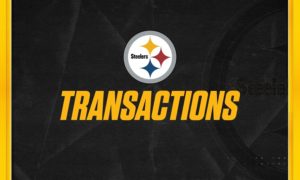Player: K Matthew Wright
Stock Value: Purchased
Reasoning: The Pittsburgh Steelers yesterday announced the signing of K Matthew Wright, with whom they have some familiarity. The veteran has kicked for the Steelers on multiple occasions while Chris Boswell missed time due to injury. Boswell, by the way, is of course still here and still their kicker indefinitely, so what’s up with this signing?
Remember when the Baltimore Ravens traded Kaare Vedvik to the Minnesota Vikings for a fifth-round pick? It’s one of the dirtiest tricks any team has ever pulled on another related to a special teams trade. Both a kicker and a punter, the Norwegian native missed his only regular season field goal attempt.
To be fair, he resurrected his career in the CFL and is actively playing there today, but he’s no Matthew Wright.
So why am I talking about Kaare Vedvik while discussing the Pittsburgh Steelers’ signing of Wright? Well, perhaps I’m just wondering if they can parlay him into a trade of their own later this offseason. They’ve done it before, trading Brad Wing to the New York Giants and keeping Jordan Berry.
The thing is, Wright has a legitimate NFL resume in spite of his lack of consistent work, because, well, there are only 32 kicker jobs in the NFL. He owns a career 85.1 field goal percentage, including an 88.9-percent success rate as a member of the Steelers.
Wright filled in for Boswell for three games back in 2020, going 4-for-4 on field goals and 7-for-7 on extra points. He spent most of the following season as the Jacksonville Jaguars’ kicker, going 21-for-24, with two missed from 50-plus.
For his career, Wright is 40-47 on field goal attempts, including 23-for-24 inside of 40 yards. He is 9-for-11 from 40-49 and 6-for-9 from 50-plus. On the whole, he has a legitimate leg for the NFL, and could theoretically be a top-32 kicker.
But why is he on the roster now? Well, perhaps the Steelers want to save some wear and tear on Boswell, who missed five games in 2022. He did manage to stay healthy all of last season, but injuries are becoming increasingly common, now at age 33. If they can’t trade him, perhaps they stash him on the practice squad.
As the season progresses, Steelers players’ stocks rise and fall. The nature of the evaluation differs with the time of year, with in-season considerations being more often short-term. Considerations in the offseason often have broader implications, particularly when players lose their jobs, or the team signs someone. This time of year is full of transactions, whether minor or major.
A bad game, a new contract, an injury, a promotion—any number of things affect a player’s value. Think of it as a stock on the market, based on speculation. You’ll feel better about a player after a good game, or worse after a bad one. Some stock updates are minor, while others are likely to be quite drastic, so bear in mind the degree. I’ll do my best to explain the nature of that in the reasoning section of each column.








